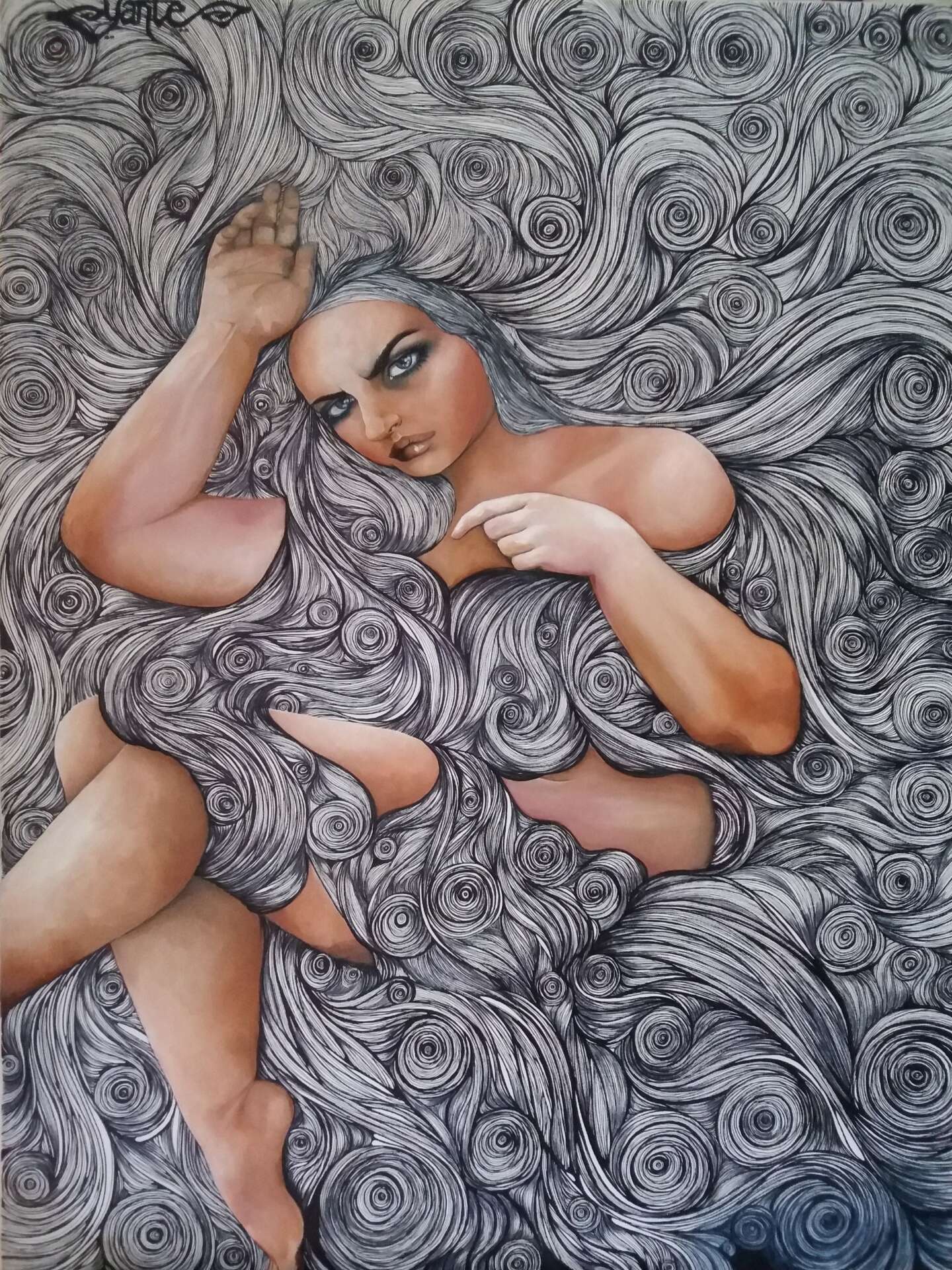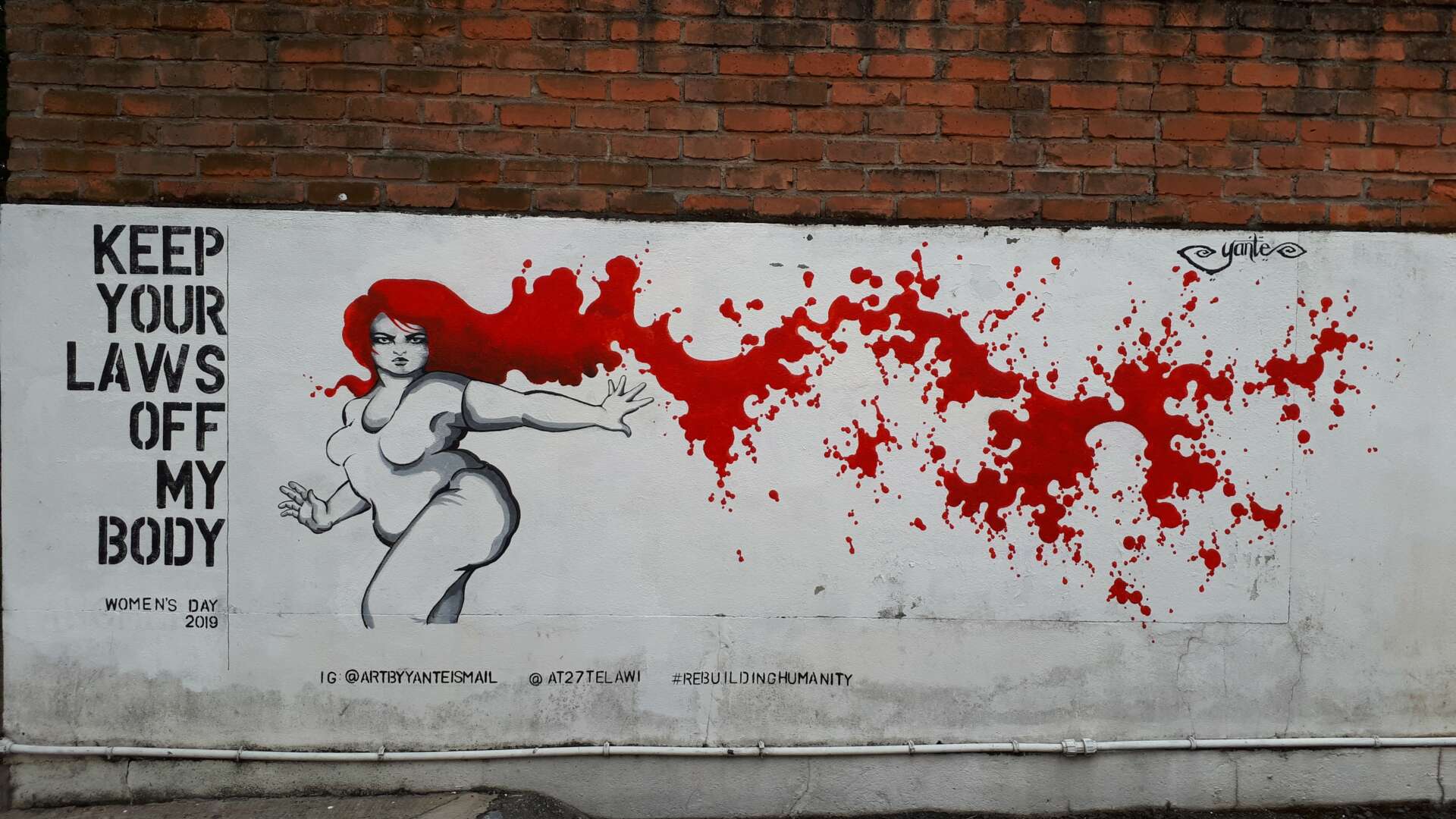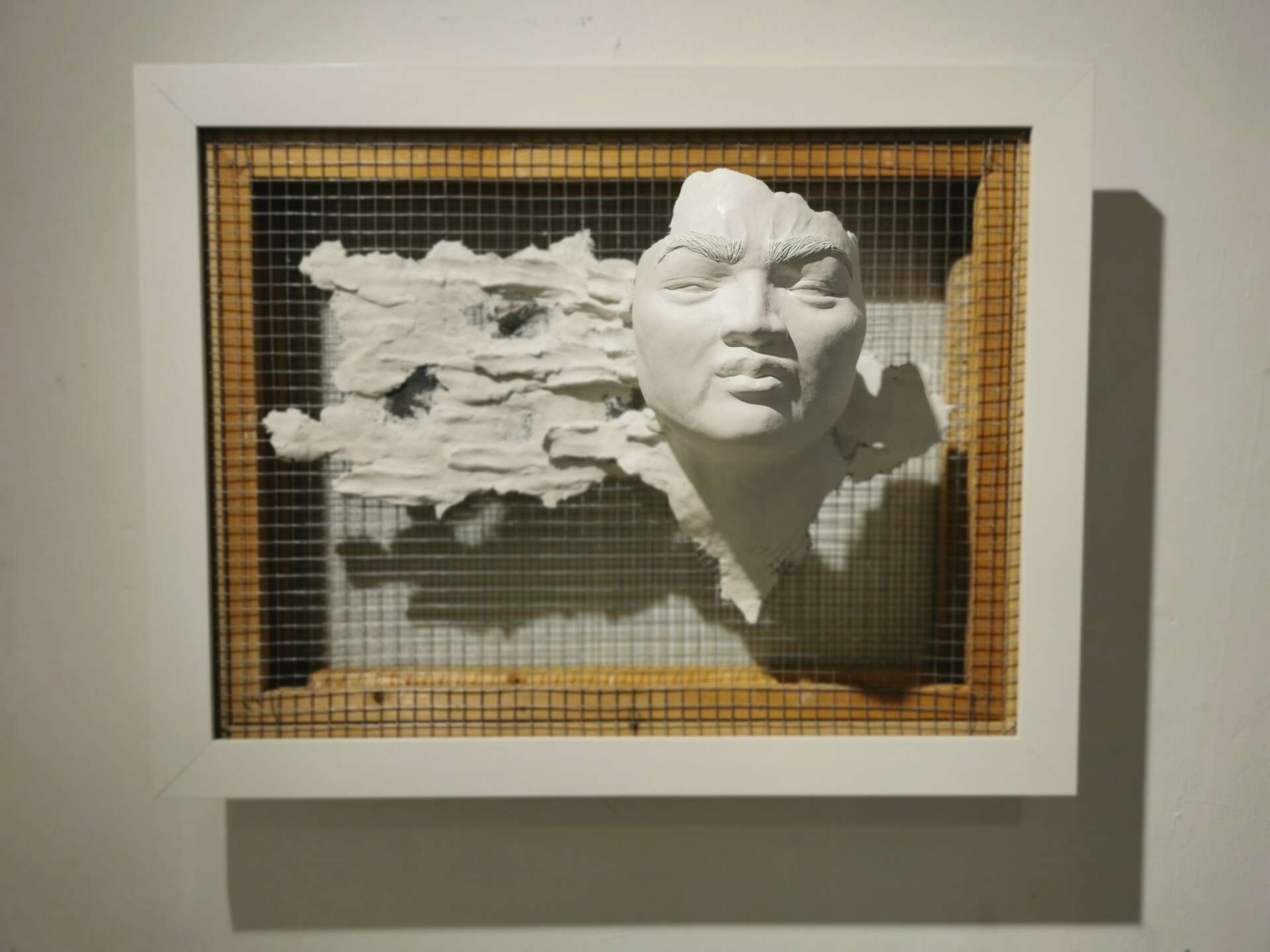We recently connected with Yante Ismail and have shared our conversation below.
Yante, thanks for joining us, excited to have you contributing your stories and insights. We’d love to hear about a project that you’ve worked on that’s meant a lot to you.
It may not be a project per se that is meaningful, but the activism art that I do in general that I consider as meaningful. I am a feminist artist. My art portrays issues broadly related to human rights, with an emphasis on women’s rights and issues around women’s empowerment. My art activism is seen through my art that challenges patriarchy, and the damaging social, religious, cultural, and social norms that dictate how women exist in society. My art responds to current issues of concern to women, including child marriage, female genital mutilation, gender-based violence, and abortion rights.
I reside in a Muslim majority country. I do not define herself as a Muslim artist, but as a female artist who is legally identified as Muslim, and living in a predominantly conservative Muslim community, my art inevitably is an act of defiance. For instance, the subject of my art are always women who are bold, strong, and project steely determination. I also almost exclusively paint the female body in the nude to provide an alternative feminist narrative and frame of reference on the subject, reclaiming it from the ‘male gaze’ that defines the female body only as sexual or lewd or shameful or virginal. The women I paint are also almost always voluptuous, to challenge the prevailing notion of beauty being only one type of body – and in fact, fundamentally, I assert for women to be seen as more than their bodies to begin with.
These themes in themselves may not be revolutionary, but they are meaningful within the patriarchal context where I exist. Feminists and feminism are demonised in this country – the way it increasingly has been around the world – at a time when women’s voices and rights are eroded more and more, and women fight every day for agency and control over their own bodies bodies. I feel that it is important now more than ever to assert and mainstream the agenda of women’s rights into the public discourse in every way we can.


Great, appreciate you sharing that with us. Before we ask you to share more of your insights, can you take a moment to introduce yourself and how you got to where you are today to our readers.
i. I am a self-taught artist, I generally work in traditional mediums such as oil and acrylic on canvas, but I have recently ventured into producing clay sculptures and have begun to work in producing jewellery with silver clay. I have been painting professionally for over a decade now.
I have been a feminist all my life, for as long as I can remember I have recognized the misogyny that surrounds our patriarchal existence, and I have challenged it – whether consciously or not. I was a feminist before I called myself an artist, and it is this firm understanding of women’s rights that has informed my art and my creative process.
I am equal parts artist and human rights activist/humanitarian worker. Parallel to my art career, I work in an international humanitarian organising, on refugee rights. My work in human rights enriches rather than dilutes or detracts from my art. It gives my art authenticity and depth.
I am also a writer, and my art is often accompanied by prose and narrative.
ii. I believe that art should not just evoke an emotional response, it should also challenge thought and provoke discourse. I believe that art is a platform for social activism and change.
My work challenges patriarchy, and the damaging social, religious, cultural, and social norms that dictate how women exist in society. My art challenges the institutional and societal obsession with controlling women’s bodies.
That is what drives me.
It is one of the reasons why I paint nude women. Actually, I almost exclusively paint the female body in the nude to provide an alternative feminist narrative and frame of reference on the subject, reclaiming it from the ‘male gaze’ that defines the female body only as sexual or lewd or shameful or virginal. I want women to ‘own’ their bodies again, and define it the way they see it, and not be defined by patriarchy or culture or religion.
Similarly, I paint women who are not thin. I have often been misunderstood as being a proponent of ‘fat’ over ‘thin’. I have often had to clarify that first and foremost, what I promote is for women to own their bodies, but more than that – for women to be seen as more than their bodies.
However, in a society that is obsessed with thin, white, and able bodies, I choose to provide an alternative image of a woman who is different to that. If media normalized the idea of an ideal body as being thin, then we should be able to use media to present the idea of other kinds of bodies as being normal and healthy and ideal.
But underlying this, what I want to convey is an acceptance of a woman’s value beyond her physicality. Sometimes, this includes portraying women with Ruben-esque curves as being completely comfortable with her own body and enjoying her sexuality.
I think what is important is that women have the choice about the way they feel about their bodies, about not being ashamed of their bodies or their sexuality – or lack of sexuality, about how they use their bodies, or what they choose to wear or how much of their body they choose to cover. I feel that even these very personal decisions are dictated by the norms of culture and religion.
They are imposed on women, but never on men. Control is imposed on women, but rarely on men. That is not right.
I hope my art challenges damaging societal, cultural, or religious constructs of women and women’s role in society, and challenge misogyny and patriarchy in society.
iii. Right now, I work in an international organization working to protect refugees. I have worked professionally in the non-profit and humanitarian sector for over 20 years now. And for half of that time, I have also been a professional artist.
My work in human rights and in the humanitarian field opens me to experiences and concerns that provoke thought, that challenge ideas and concepts. In turn, these experiences inspire my art.
Each artist’s inspiration is unique to herself. Some look to beauty. Some, to sorrow or anger. Some look to faith.
I find that some of my most meaningful work comes from what I see in humanity, and the human rights concerns plaguing us as a species. As a feminist, I pick up on issues related to women’s rights every day, all around me. I think working in the humanitarian field – while not specific to women’s rights only – helps hone my attention to the issue of human rights in general. And one cannot discuss issues of feminism without situating it within the context of human rights.

![]()
Is there a particular goal or mission driving your creative journey?
Ultimately, I would like to create a movement of feminist artists in Malaysia, working in various mediums with the one common aim of challenging and pushing against patriarchy, of amplifying voices of women, and re-constructing a reality where there is greater justice and equality for women.
Along the way, what is important to me is to keep using my art to make commentaries on current issues affecting women or broadly on human rights.
My audience is always that one young woman who needs to be inspired to express herself without fear, or who needs the words to express her anger over the injustices women face, or who needs an alternative to the prevailing images of how a woman should be, or who needs to see hope to an end to the misogyny that surrounds our society. She is who I produce my art for, and for as long as I keep speaking to her with my art, I have accomplished my goal.


Looking back, are there any resources you wish you knew about earlier in your creative journey?
This is an easy one – I wish I had realised earlier in my career how crucial it was to find your ‘tribe’ or sisterhood of like-minded female artists who uplift, inspire, support, and share your artistic vision.
Being an artist can be an isolating affair – we create in solitude and it is easy to not make genuine connections with others unless you deliberately seek out those friendships. At the start of my art career, I thought all I needed was to produce art, get it in a gallery, make a sale, and it was done.
It was only when I started connecting with fellow female artists many years later that I realise what a yawning hole that had existing in my life up till that point. I found these friendships vital to the creative process – not least to bounce ideas and find inspiration, but also to show up for each other and defend each other. The art world is a man’s world – with women being largely underrepresented in galleries and shows. I was once told that collectors would wait a few years before purchasing a female artist’s artwork to ensure she had longevity in her career – the assumption was that women would fail. More than ever female artists need to stand up for each other and uplift each other.
I wish I had learnt this much earlier in my career. I have benefited enormously from the energy, support, ‘cheer-leaderness’ of the amazing female artists I now surround myself with, many of whom have become dear friends.

![]()
Contact Info:
- Instagram: instagram.com/studio.yante.ismail
- Facebook: facebook.com/StudioYanteIsmail
Image Credits
All photo credit: Yante Ismail


